In Figure. , find the position of final image formed.
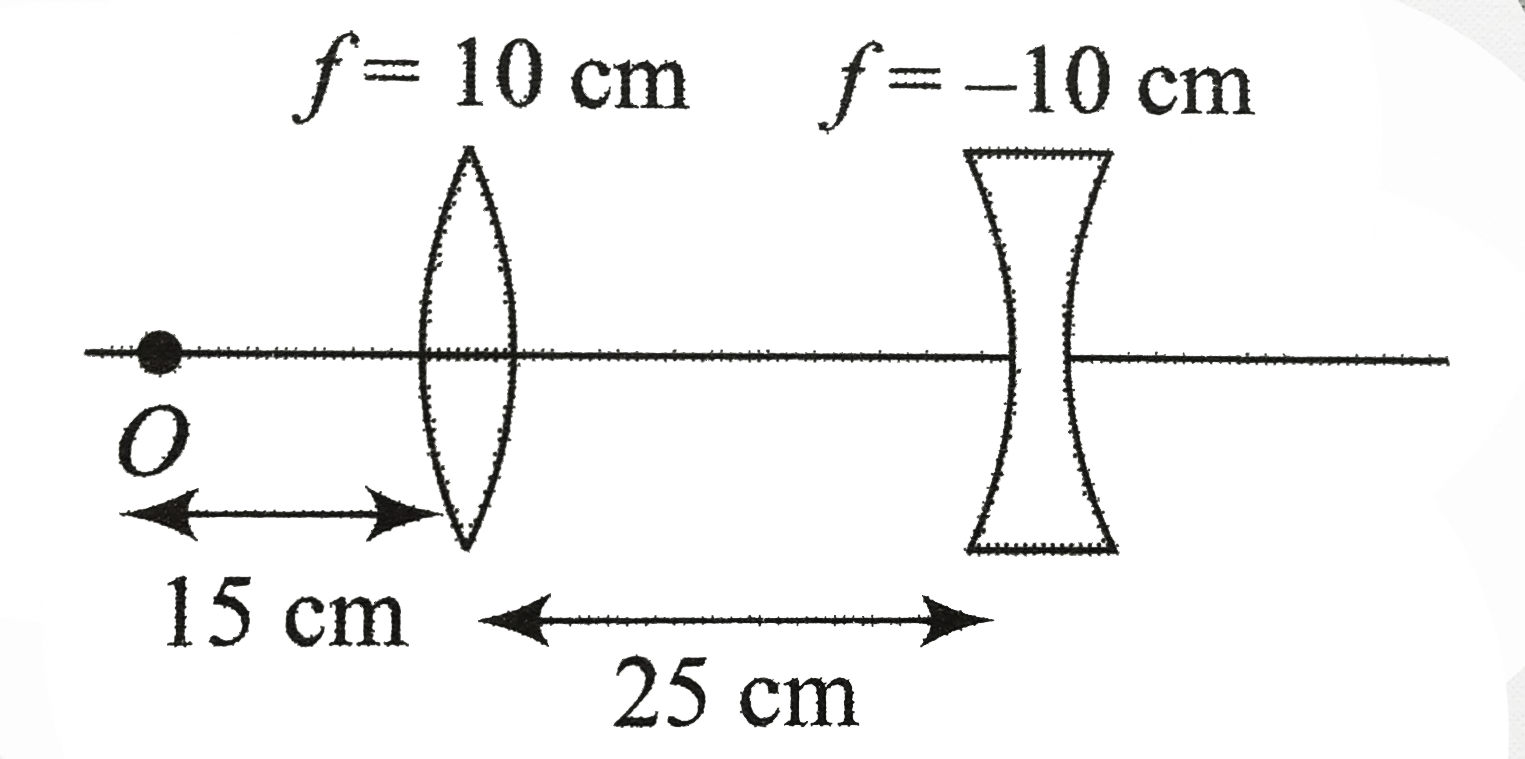
For convex lens:
v=ufu+f=−15×10−15+10=30cm
For concave lense: u=(30−25)=5cm
u=(30−25)=5cm
v=ufu+f=5(−10)5−10=10cm
So, final image is formed 10 cm to the right of the concave lens.
Topper's Solved these Questions
- GEOMETRICAL OPTICSBook:CENGAGE PHYSICSChapter:GEOMETRICAL OPTICSExercise:Subjective
Explore 26 Videos
- GEOMETRICAL OPTICSBook:CENGAGE PHYSICSChapter:GEOMETRICAL OPTICSExercise:Single Correct
Explore 221 Videos
- GEOMETRICAL OPTICSBook:CENGAGE PHYSICSChapter:GEOMETRICAL OPTICSExercise:Exercise1.6
Explore 15 Videos
- FRICTIONBook:CENGAGE PHYSICSChapter:FRICTIONExercise:QUESTION BANK
Explore 1 Video
- GRAVITATIONBook:CENGAGE PHYSICSChapter:GRAVITATIONExercise:Question Bank
Explore 39 Videos
Similar Questions
(a) Under what conditions is the phenomenon of total internal reflection between the critical angle of incidence and the refractive index of the medium.
(b) Three lenses of focal lengths+10 cm, -10 cm and + 30 cm are arranged coaxially as in the figure given below. Find the position of the final image formed by the combination.
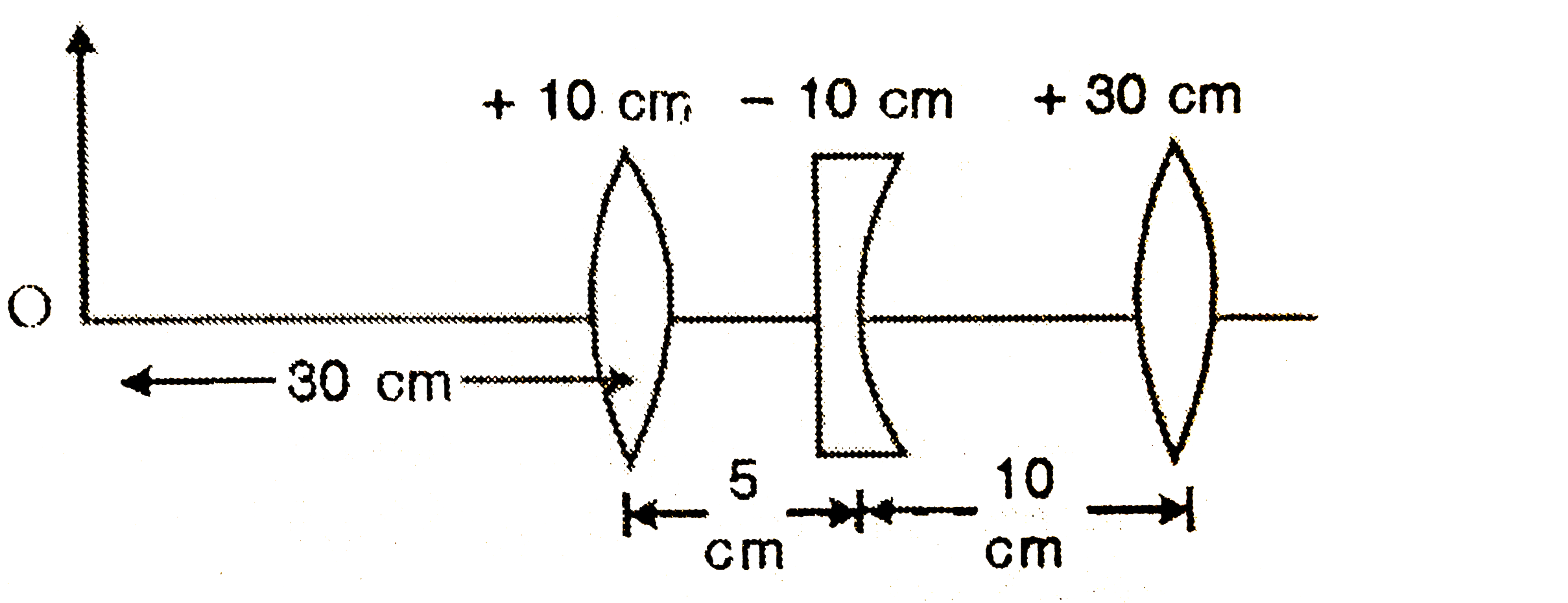
View SolutionAn object is placed on the principle axis of a concave mirror of focal length 10cm at a distance of 21cm from it. A glass slab is placed between the mirror and the object as shown in figure.
Find the distance of final image formed by the mirror.
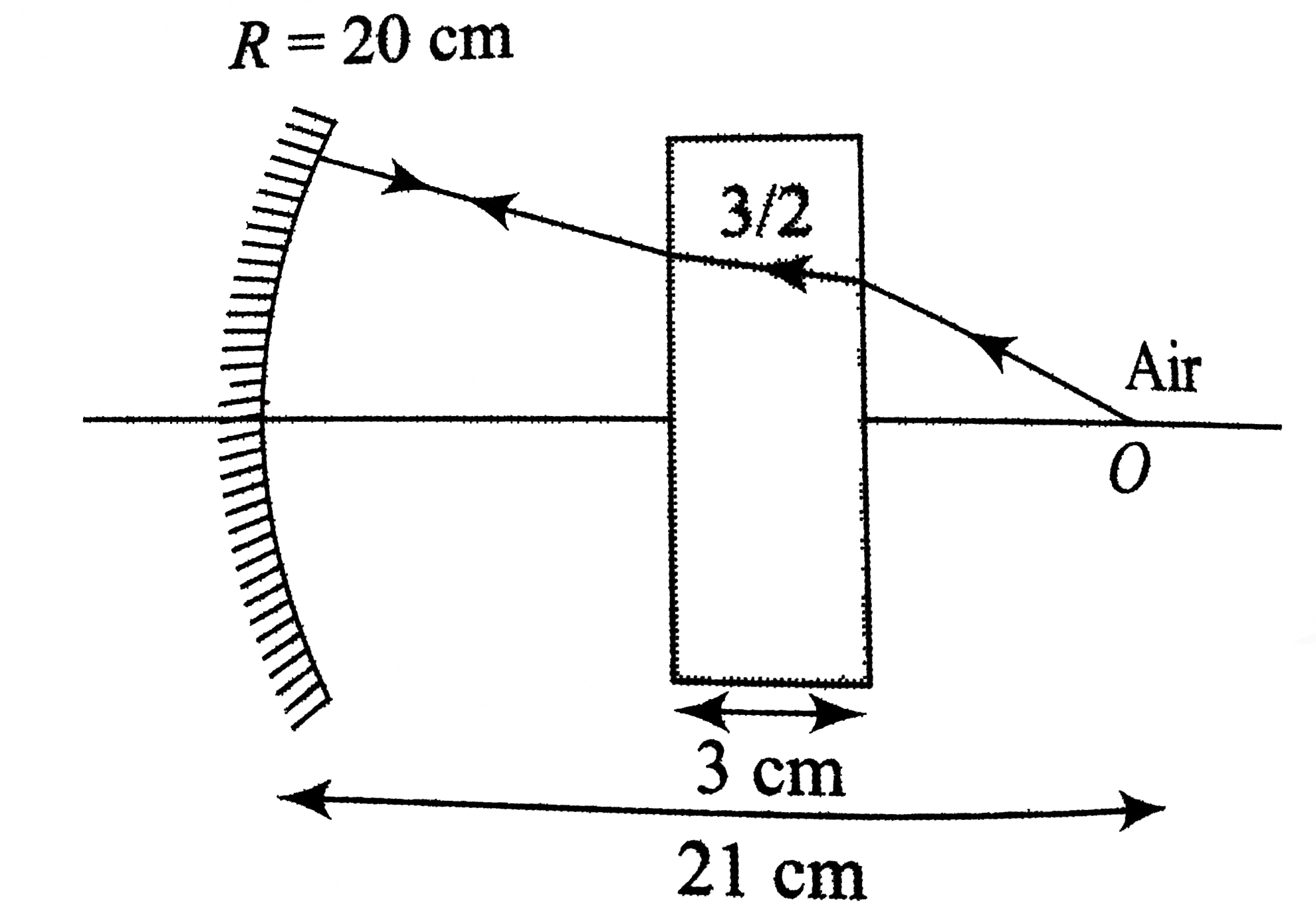
View Solution
Knowledge Check
A point ofject 'O' lies in front of the lens as shown in figure. Find the final position of image formed by the combined lenses.
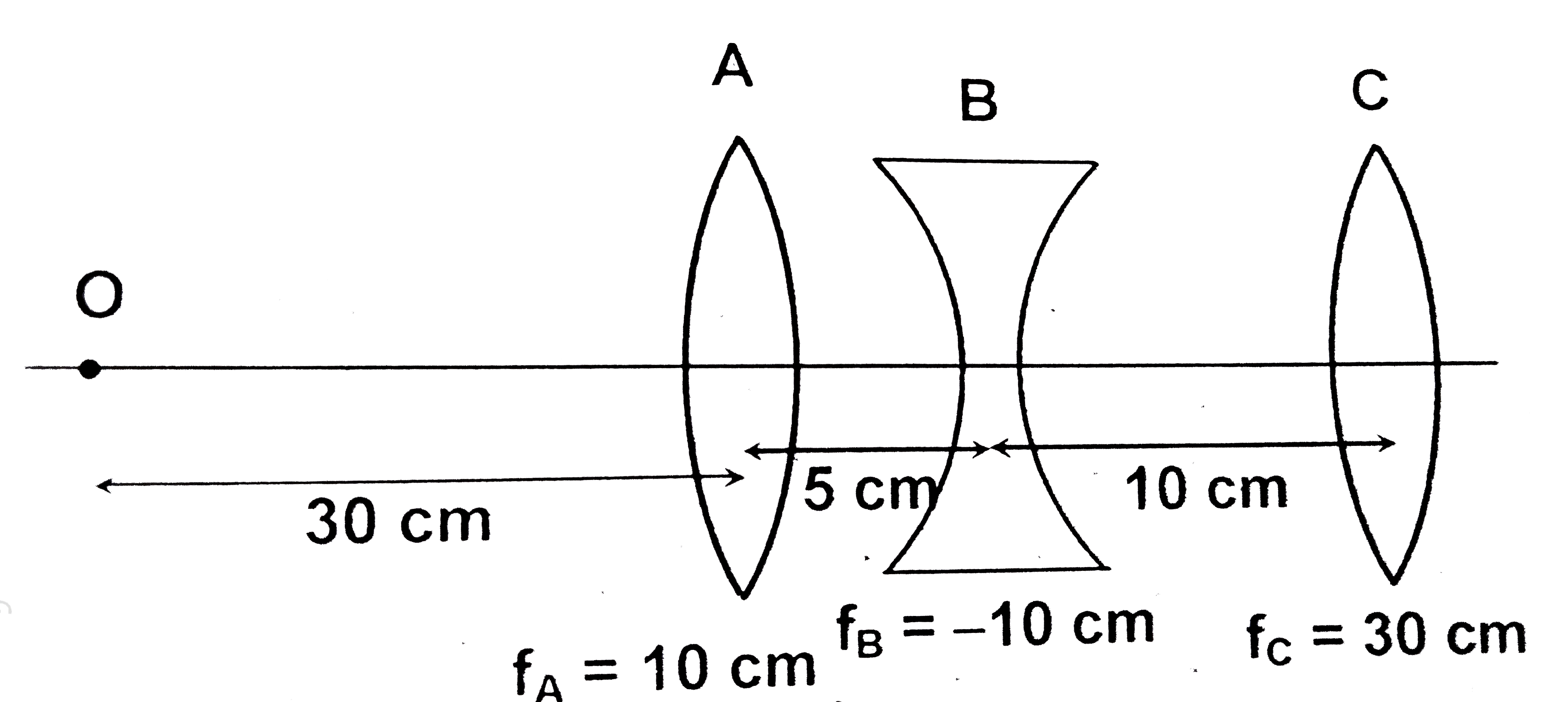 A10cm to the right of the lens CB15cm to the right of the lens CC20cm to the right of the lens CD30cm to the right of the lens C
A10cm to the right of the lens CB15cm to the right of the lens CC20cm to the right of the lens CD30cm to the right of the lens CIf the optic axis of convex and concave lenses are separated by a distance 5mm as shown in the figure. Find the coordinate of the final image formed by the combination if parallel beam of light is incident on lens. Origin is at the optical centre of convex lens
 A(25cm,0.5cm)B(25cm,0.25cm)C(25cm,−0.5cm)D(25cm,−2.5cm)
A(25cm,0.5cm)B(25cm,0.25cm)C(25cm,−0.5cm)D(25cm,−2.5cm)
An object is placed 10cm away form a glass piecwe (n=1.5) of length 20cm bounded by spherical surfaces of radii of curvaure 10cm. Find the position of final image formed after two refractions at the spherical surfaces.
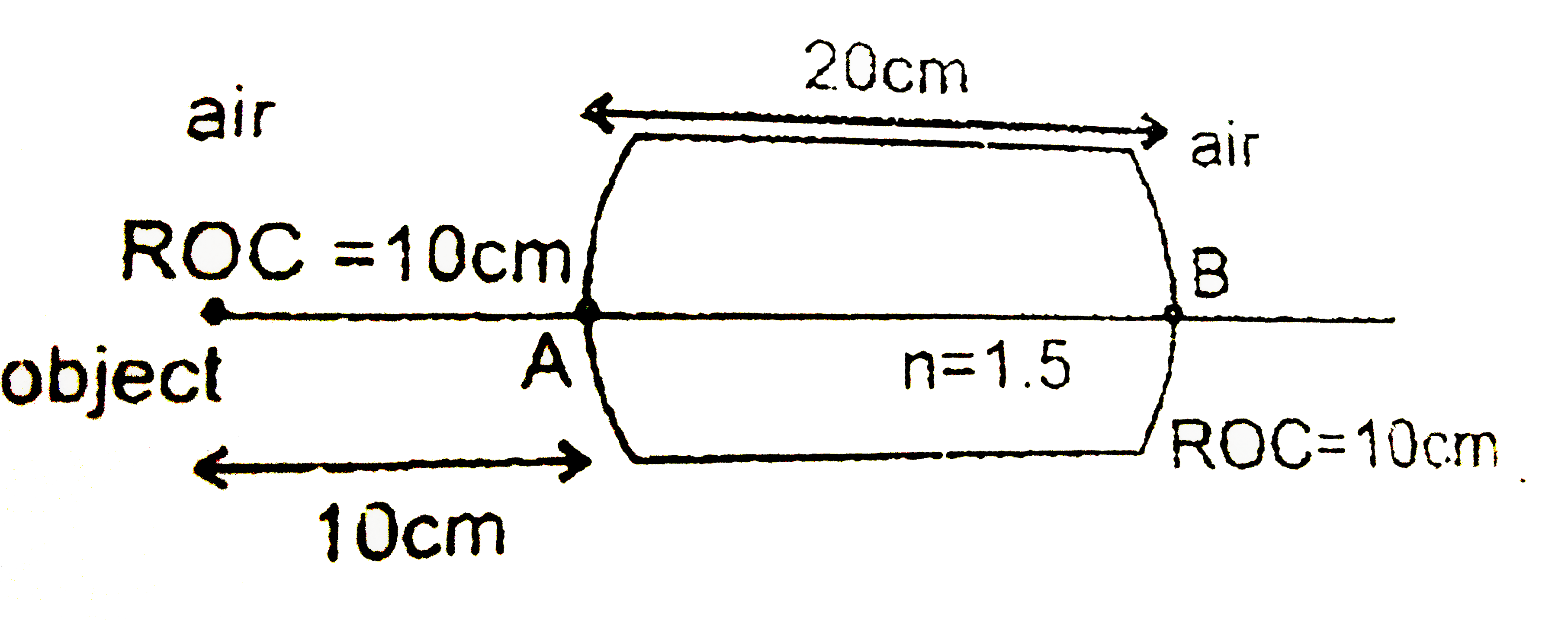
View SolutionSee the figure. Find the distance of final image formed by mirror
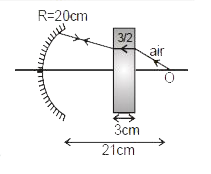
View SolutionSee the figure
Find the distance fo final image formed by mirror
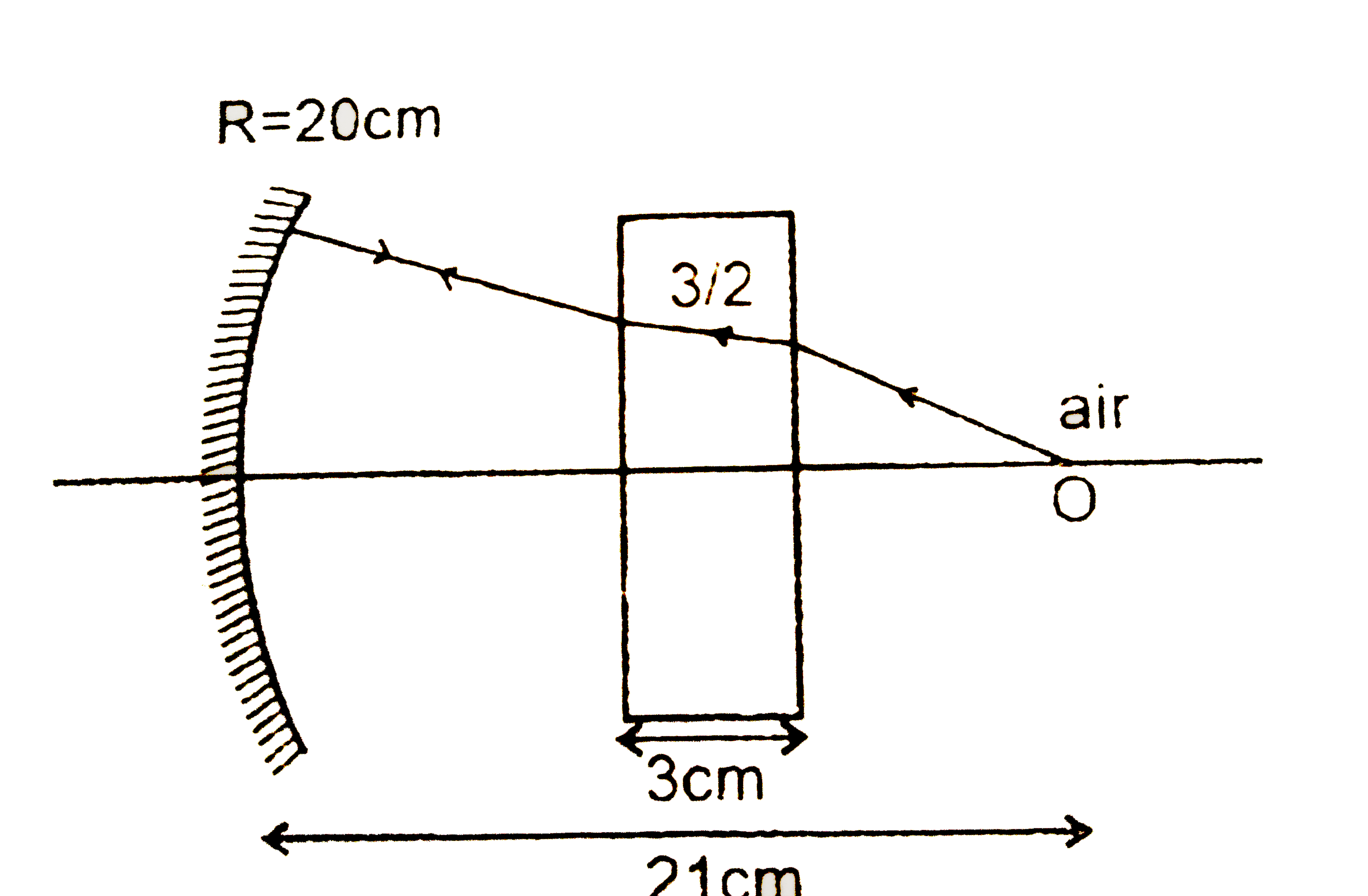
View SolutionFind the positon of final images formed.
(The gap shown in figure of negligible width)
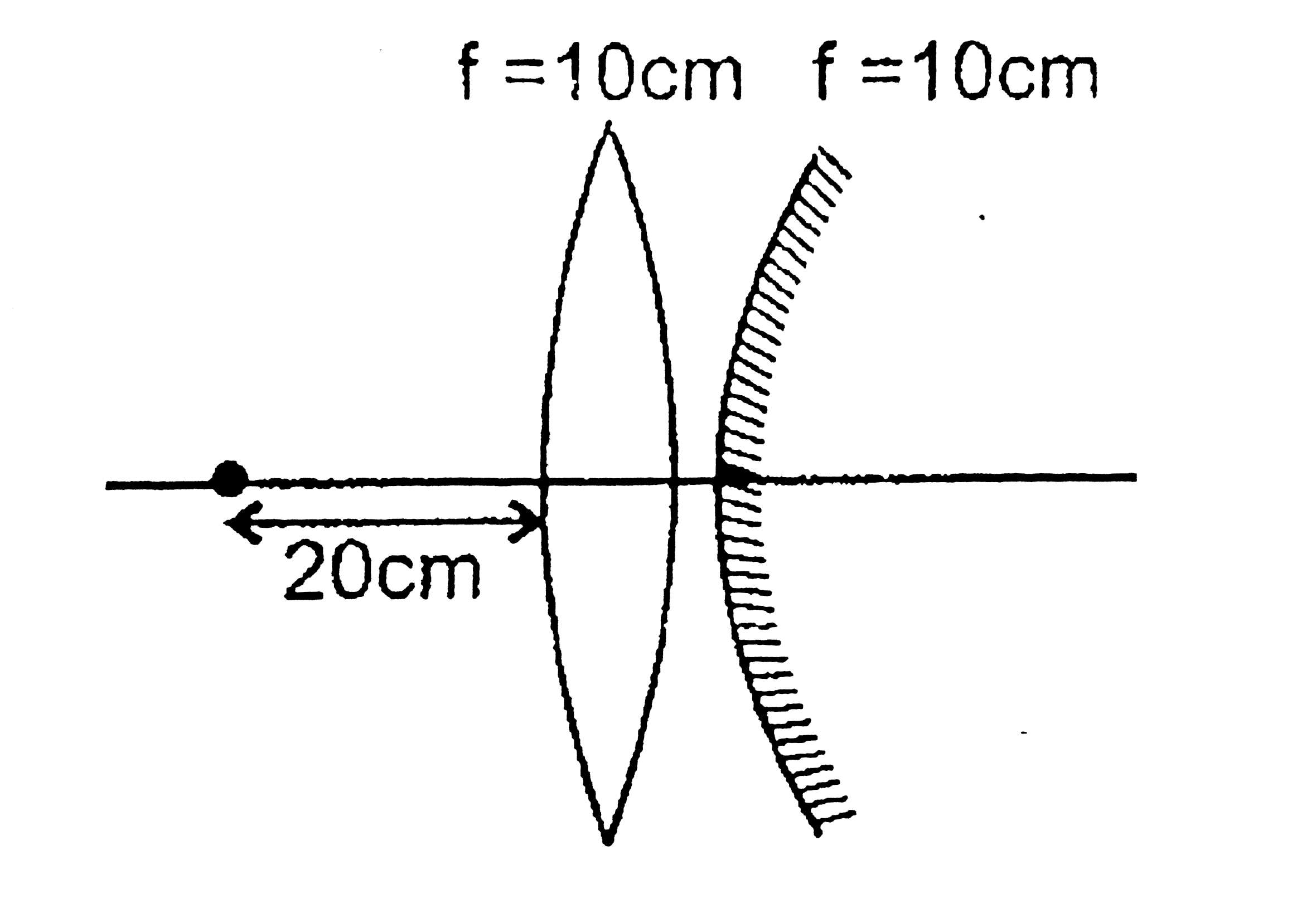
View SolutionFind out the position of the final image formed by two reflections. Take the first reflection from M1.
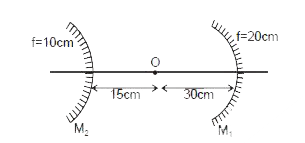
View SolutionFind out the position of the final image formed by two reflections. Take the first reflection from M1.
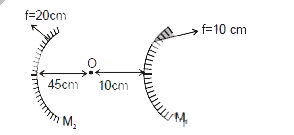
View Solution
